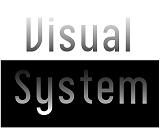When you`re leasing a property, it`s important to know what options you have when it comes to extending your lease agreement. Whether you`re a tenant or a landlord, understanding the process of extension on lease agreements can be beneficial.
As a tenant, you may want to extend your lease if you`re happy with the property and want to continue living there. This can be especially beneficial if you`re someone who likes stability and doesn`t want to be forced to move after a set amount of time. On the other hand, as a landlord, an extension on a lease can help you keep a reliable tenant in the property and avoid the hassle of finding a new one.
The first step to extending a lease is to check the terms of the original lease agreement. Some agreements may have clauses that allow for extensions, while others may not. If there is a clause allowing for extensions, it`s important to understand the conditions of the extension. For example, there may be a set amount of notice required before the extension can be granted, or there may be an additional fee that needs to be paid.
If there is no clause in the original agreement allowing for extensions, it`s important to approach the landlord or property manager to discuss the possibility. This conversation can be particularly helpful if you have been a reliable tenant and are able to present a strong case for why an extension is beneficial for both parties.
When extending a lease, it`s important to have all the details in writing. This includes the duration of the extension, any additional fees or costs, and any specific conditions that need to be met. Having a written agreement can help prevent misunderstandings or disputes down the road.
It`s also important to keep in mind that in some cases, extending a lease may not be possible or may not be the best option. For example, if a landlord has plans to renovate or sell the property in the near future, they may not be willing or able to grant an extension on a lease.
In conclusion, extending a lease agreement can be a great option for both tenants and landlords. By understanding the terms of the original agreement, having open communication with the other party, and having a clear written agreement in place, the process can be straightforward and beneficial for all involved.
